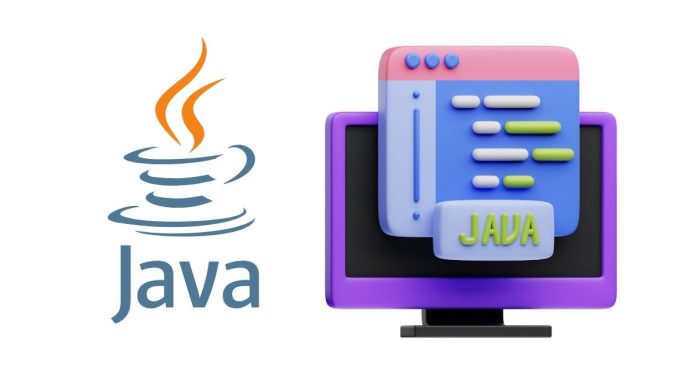In Java programming, as in most programming languages, the source code is made up of smaller units that the compiler can recognize and interpret. These smaller units are known as tokens. A token is the smallest unit of meaningful data in a program. The Java compiler processes these tokens to understand the structure and flow of the program. In this blog post, we’ll explore what Java tokens are, the different types of tokens, and how they work together to form a complete Java program.
What Are Java Tokens?
In simple terms, tokens are the building blocks of any Java program. They are the smallest pieces of a program that the compiler can identify and act upon. A token could be a keyword, identifier, literal, operator, or delimiter. Java source code is broken down into these tokens during the process of compilation.
Tokens play a crucial role in Java programming because they help the compiler understand the structure of the program and how different parts interact with each other. By breaking down the source code into tokens, the Java compiler can more easily analyze and translate the code into executable machine language.
Types of Java Tokens
Java tokens can be broadly classified into six main types:
- Keywords
- Identifiers
- Literals
- Operators
- Separators (or Delimiters)
- Comments
Let’s take a closer look at each type of token.
1. Keywords
Keywords are reserved words in Java that have a specific meaning and cannot be used for any other purpose (such as naming variables or functions). These words form the syntax of the Java language and guide the flow of a program. Examples of keywords include:
classifwhilepublicprivatestaticvoid
Java has 50+ reserved keywords, and using these for identifiers would result in a syntax error.
2. Identifiers
Identifiers are names given to variables, methods, classes, and other user-defined entities in a Java program. Identifiers can be composed of letters (A-Z, a-z), digits (0-9), underscores (_), and dollar signs ($), but they must start with a letter, underscore, or dollar sign.
Examples of valid identifiers:
myVariablestudentNamecount1_sum
Note that Java identifiers are case-sensitive, meaning myVariable and myvariable are considered different.
3. Literals
Literals are fixed values that appear directly in the code. They represent data used by the program, such as numbers, characters, or boolean values. There are several types of literals:
- Integer literals:
10,-50,0 - Floating-point literals:
3.14,-5.67 - Character literals:
'A','1' - String literals:
"Hello, World!" - Boolean literals:
true,false - Null literal:
null
Literals are used directly in expressions and statements in Java.
4. Operators
Operators are symbols used to perform operations on variables and values. Java has a wide variety of operators, which can be classified into several categories:
- Arithmetic operators:
+,-,*,/,% - Relational operators:
==,!=,>,<,>=,<= - Logical operators:
&&,||,! - Assignment operators:
=,+=,-=,*=,/= - Bitwise operators:
&,|,^,~,<<,>>,>>>
Each of these operators performs specific operations on data, helping to manipulate values and control program flow.
5. Separators (or Delimiters)
Separators, also known as delimiters, are characters used to separate or mark boundaries in Java code. They help organize the code into blocks, and their purpose is to distinguish different elements of the program.
Common separators include:
- Semicolon (
;) – Marks the end of a statement. - Comma (
,) – Separates items in a list (such as variables or parameters). - Period (
.) – Used to access members of a class or object. - Parentheses (
()), Curly braces ({}), Square brackets ([]) – Used for method calls, loops, and array definitions.
6. Comments
Comments are non-executable parts of code used to annotate or explain the program to humans. They have no effect on the program’s execution, but they help other developers (or your future self) understand the logic and structure of the code.
There are two types of comments in Java:
- Single-line comments: Begin with
//and continue until the end of the line. - Multi-line comments: Begin with
/*and end with*/.
Example:
// This is a single-line comment
/* This is a multi-line comment
that spans two lines */
Putting It All Together
Here’s an example of Java code that utilizes various tokens:
public class MyClass {
public static void main(String[] args) {
int x = 10; // Integer literal and variable declaration
int y = 20;
// Arithmetic operation
int sum = x + y;
System.out.println("The sum is: " + sum); // String literal and operator
}
}
In this example, we have:
- Keywords:
public,class,static,void - Identifiers:
MyClass,main,x,y,sum,args - Literals:
10,20,"The sum is: " - Operators:
=,+ - Separators:
;,{},() - Comments:
// Integer literal and variable declaration
Conclusion
Java tokens are the fundamental building blocks of any Java program. Understanding how they work and how they are categorized will give you a strong foundation for writing clean, efficient, and error-free Java code. Whether you’re just starting or already a seasoned Java developer, a solid understanding of tokens is essential for mastering the language. Keep practicing and experimenting with different token types to see how they combine to form powerful Java applications!


